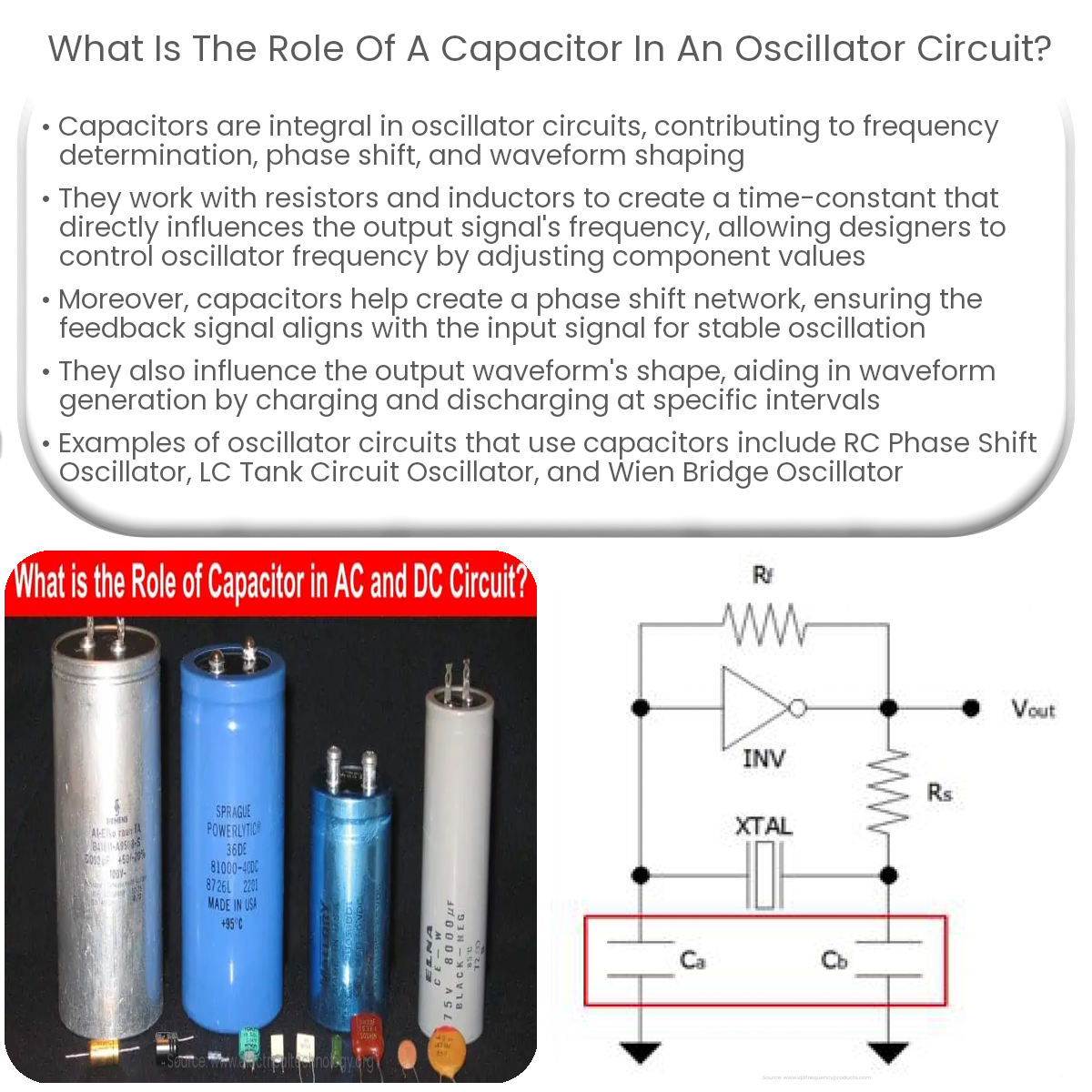Capacitors in oscillator circuits control frequency, shape output waveforms, and provide the necessary phase shift for feedback, enabling stable oscillations.
The Role of a Capacitor in an Oscillator Circuit
An oscillator is an electronic circuit that produces a continuous, repetitive, and periodic waveform, such as a sine wave or square wave. Oscillators are essential components in various applications, including communication systems, clock generation, and signal processing. Capacitors play a vital role in the functioning of oscillator circuits, as they help control the frequency and shape of the output waveform.
Frequency Determination
In an oscillator circuit, capacitors work together with resistors and inductors to form a frequency-determining network. This network creates a specific time constant, which directly influences the frequency of the output signal. The time constant is determined by the product of the capacitance (C) and resistance (R) or inductance (L) values. By adjusting the values of the capacitors or other passive components, designers can control the frequency of the oscillator.
Phase Shift and Feedback
Capacitors are also crucial in providing the necessary phase shift for feedback in oscillator circuits. For an oscillator to function, a portion of the output signal is fed back into the input with the proper phase relationship. Capacitors, along with other passive components, create a phase shift network that ensures the feedback signal is in-phase with the input signal. This positive feedback sustains oscillation and maintains a stable output waveform.
Shaping the Output Waveform
Capacitors can affect the shape of the output waveform in an oscillator circuit. For example, in a square wave or pulse generator, capacitors help generate the desired waveform by charging and discharging at specific intervals. In a sine wave oscillator, capacitors are used to filter harmonics and ensure a sinusoidal output.
Examples of Oscillator Circuits with Capacitors
- RC Phase Shift Oscillator: This oscillator uses an RC network to create the necessary phase shift and frequency determination. A series of RC sections generate a 180-degree phase shift, while an additional 180-degree phase shift is provided by an amplifier.
- LC Tank Circuit Oscillator: In this oscillator, a capacitor and an inductor form a resonant LC tank circuit, which determines the frequency of oscillation. The energy stored in the capacitor and inductor is exchanged back and forth, producing a sinusoidal output.
- Wien Bridge Oscillator: This oscillator uses a combination of resistors and capacitors to create a frequency-selective feedback network. The output frequency is determined by the values of the capacitors and resistors in the feedback path.
In summary, capacitors play a crucial role in oscillator circuits, determining frequency, shaping output waveforms, and providing the necessary phase shift for feedback. Their versatility and wide range of applications make capacitors indispensable in the design and operation of oscillator circuits.




